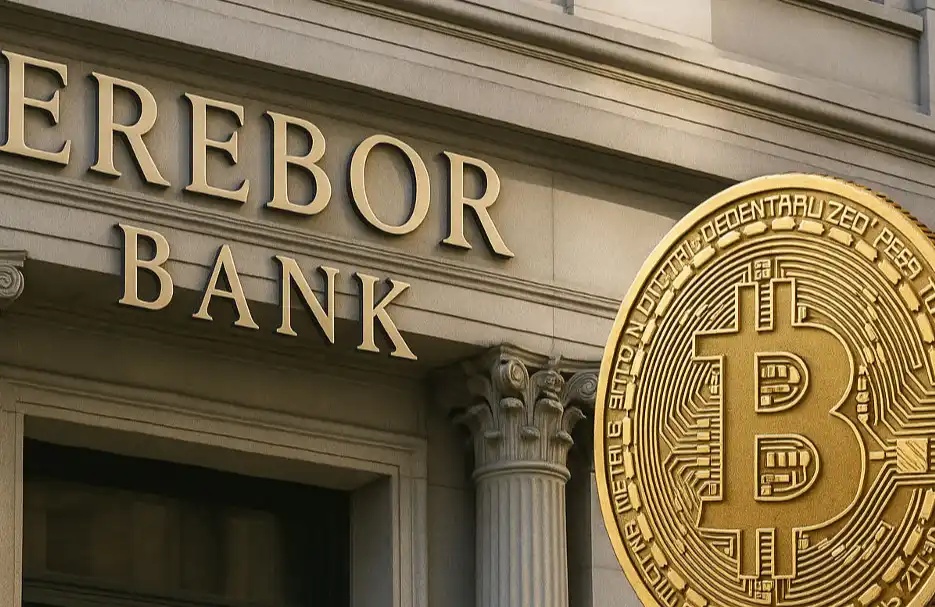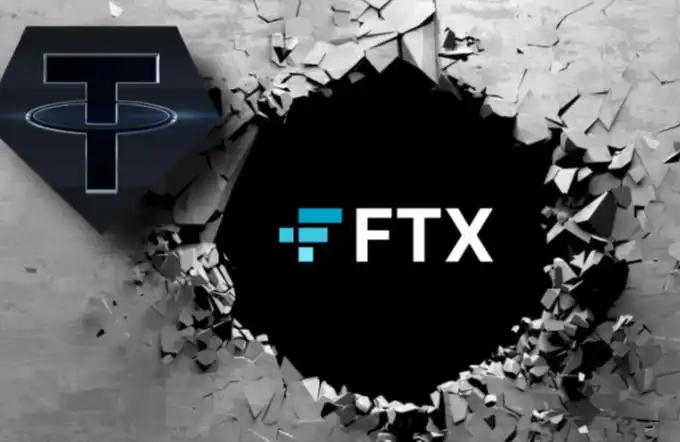The hidden concern of MakerDao is not only the exposure of RWA.
Original author: Alex Xu, Mint Ventures
This issue of Clips focuses on the RWA leader and DeFi blue-chip project MakerDao, which has recently gained popularity. The author attempts to analyze the internal and external factors behind the rise of MKR, and evaluates its advantages, challenges, and long-term hidden dangers from Maker's business perspective.
The following article represents the author's current perspective at the time of publication, and may contain factual errors and biases. It is intended for discussion purposes only, and the author welcomes corrections from other industry professionals.
1. MKR Price Rebound: Result of Multiple Factors
Recently, the secondary market prices of the older generation DeFi have rebounded significantly, with Compound and MakerDao showing the most obvious gains. Although Compound's surge is partly due to founder Robert Leshner's second entrepreneurship in the RWA track, this event has limited impact on Compound's fundamentals, and the rise of Comp is more of a "dry pull", with little analytical value.
MKR's rise is driven by a combination of internal and external factors, including the logic of fundamental business reversal and the gradual fermentation of the long-term vision of the Endgame plan.
Specifically, the driving force behind the recent rise of MKR includes:
1. The monthly expenses of the agreement have decreased, with monthly expenditures dropping from the previous 5-6 million US dollars to around 2 million in June.

Maker's token transfer payment statistics, image source: https://makerburn.com/#/expenses/accounting
2. Converting collateral from interest-free stablecoins to government bonds or stablecoin financial management significantly increases the expected financial income, reflected in the decrease of PE. According to makerburn's statistics, MakerDao's predicted annual income from RWA alone is as high as nearly $71 million.

Maker's RWA asset list, image source: https://makerburn.com/#/rundown
3. Founder Rune sold LDO and other tokens in the secondary market and continued to repurchase MKR for several months, giving the market confidence.

Maker's system surplus data, image source: https://makerburn.com/#/system-surplus
In addition, since last year, Maker's founder Rune Christensen proposed the Endgame Maker transformation plan, the grand vision of its narrative has also made many investors believe and buy in after the performance and coin price of MKR rebounded.
MakerDao's Endgame aims to achieve its vision of a "fair and stable global currency" by optimizing its governance structure and funding sub-projects.
In addition, recently the narrative of RWA seems to be quite popular in the market. Although there are not many projects that have launched tokens around this business, the discussion has clearly increased in popularity and has gained the favor of many investment institutions.
Generally speaking, the recent rise of MKR is the result of a combination of internal and external factors. The internal factors are the main driving force. As for the promotion of the RWA narrative, the author is more inclined to believe that MakerDao's practice and good results in the RWA business have promoted the development of the cryptocurrency market's RWA narrative, rather than the other way around. The causality here has been reversed.
2. The Essence of MakerDao's Business
So, how should we view the long-term impact of these factors on MakerDao? Can these positive factors push Maker to the next level and achieve its grand vision of creating a "world fair stablecoin"?
The author finds it difficult, and this requires starting with the business essence of MakerDao.
MakerDao's core business has never changed, and is essentially the same as projects such as USDT, USDC, and BUSD, which is to generate "seigniorage revenue" by promoting their stablecoins through the issuance and operation of stablecoins.
The so-called coinage tax can be broadly understood as the income obtained by the currency issuer through currency issuance. Different stablecoin projects have different ways of obtaining coinage tax revenue. For example, Liquity, another decentralized stablecoin project, charges users a fee of 0.5% when they mint its stablecoin Lusd. For Tether users, a fee of 0.1% or $1000 is required when depositing or withdrawing US dollars.
In addition, Tether will actively allocate the US dollars stored by users with them to purchase Treasury bonds, reverse repurchase agreements, or money market funds with better liquidity, in order to earn financial income on the asset side.
In addition, the main difference between Dai and USDT and USDC is its decentralized positioning. "Dai has stronger anti-censorship and smaller regulatory exposure compared to USDT and USDC" is the most important differentiated value of Dai. However, replacing Dai's collateral with RWA assets that can be seized by centralized forces essentially dissolves the difference between Dai and USDC and USDT.
Of course, Dai is currently still the largest decentralized stablecoin with a market value of 4.3 billion, which is significantly ahead of Frax (nominal market value of 1 billion) and LUSD (market value of 290 million).
3. Dai Competitive Advantages
Aside from actively attempting to approach RWA on the asset side, Maker's overall operation of Dai in recent years has been lackluster. However, it still maintains a competitive advantage as the top decentralized stablecoin in terms of trading volume, due to two factors:
1. The legitimacy and brand of the "first decentralized stablecoin" have enabled Dai to be integrated and adopted by many top DeFi and Cex platforms, greatly reducing its liquidity and business PR costs. For example, as one of the currencies in Curve's oldest stablecoin liquidity base pool (basepool) 3pool, Dai is default as the basic stablecoin by Curve. This means that Maker, as the issuer of Dai, does not need to spend a penny on Dai's liquidity on Curve. Moreover, Dai also enjoys indirect subsidies provided by other liquidity bribe providers (when these projects purchase their own tokens and pair them with 3pool liquidity).

2. Network effect of stablecoins: People always tend to use the stablecoin with the largest network scale, the most users and scenarios, and the one they are most familiar with. In the decentralized stablecoin sub-category, Dai still leads in terms of network scale compared to its competitors.
However, Dai's main competitors are not Frax and Lusd (who are also in a difficult situation). When users and project parties choose stablecoins to use and cooperate with, they often compare them with USDT\USDC instead of Dai. Compared to them, Dai is at a clear disadvantage in terms of network.
4. MakerDao's Real Challenge
Despite the short-term bullish factors of MakerDao, the author still holds a pessimistic attitude towards its future development. After discussing the nature of Maker's business as stablecoin issuance and operation, as well as the competitive advantages of Dai, let us face the real problems they are facing.
Question 1: Dai's scale continues to shrink, and the expansion of application scenarios has been stagnant for a long time

Data source: https://www.coingecko.com/en/coins/dai
Dai's market capitalization has fallen nearly 56% from its previous high and shows no signs of stopping. Meanwhile, even in a bear market, USDT has reached a new high in market capitalization.

Data source: https://www.coingecko.com/en/coins/tether
The previous wave of growth for Dai came from the mining frenzy during the DeFi summer, but where will the driving force for its next growth cycle come from? It seems difficult to find a strong use case for Dai within the current scope of vision.
Maker has not failed to consider and plan for how to expand the use cases of Dai to be more widely accepted. According to Endgame's design, the first approach is to introduce renewable energy projects for Dai's underlying assets, making Dai a "clean currency." In Endgame's scenario, this would give Dai a mainstream brand element and make it more politically costly for real-world authorities to seize or confiscate clean energy projects that back Dai. In my opinion, the idea that increasing the "green" content of collateral can increase the acceptance of Dai is too naive. People may support environmental protection in their thoughts or slogans, but when it comes to practical actions, they still choose USDT or USDC, which have wider acceptance. It is already difficult to promote decentralized stablecoins in the extremely decentralized web3 world, so how can we expect residents of the real world to use Dai because of "environmental protection"?
The second approach, which is also the focus of Endgame, is incubated by Maker and developed by the community around sub-projects of Dai. On the one hand, subDAO undertakes the governance and coordination work that is currently concentrated on the MakerDao mainline in a parallel and decentralized manner, transforming centralized governance into governance of different sections and projects. On the other hand, subDAO can establish separate commercial projects to explore new sources of revenue and provide Dai with new demand scenarios. However, this is also the second important challenge that Maker faces.
Question 2: How can the subDAO project succeed in both receiving MKR and Dai funding while also succeeding in entrepreneurship?
Maker's many subDAOs incubated in the future will use their own new tokens to incentivize Dai liquidity mining, thereby enhancing the use of Dai. At the same time, MakerDao will provide low-interest or zero-interest Dai loans to subDAO business projects to help them get started. In addition to low-interest financial support, subDAO also inherits MakerDao's brand credibility and community, which is very important for the launch of DeFi. Compared to relying on environmentally friendly projects to increase Dai adoption, the subDAO solution sounds more feasible and has been proven in the DeFi field. For example, Frax has developed its own Fraxlend, which supports borrowing Frax with various collateral to provide usage scenarios for Frax.

Fraxlend asset lending list, image source: https://facts.frax.finance/fraxlend
However, the problem is that in the DeFi field, the "low-hanging fruit" has already been picked by entrepreneurs, so it is not easy to develop a subDAO project that adapts to market demand. What's more, these subDAOs also need to shoulder the responsibility of delivering value to Dai and MKR while developing projects, as they need to allocate additional project tokens to Dai, ETHD (a repackaged version of the LST token planned in Endgame, used as collateral for Dai), and MKR as incentives. With such a "tribute task," it is difficult to complete the task of meeting user needs and defeating competitors. Among them, Spark, a lending product incubated and launched by MakerDao, currently has an actual TVL of only over 20 million Dai, excluding the 20 million Dai directly minted and provided by MakerDao.

Image source: https://app.sparkprotocol.io/markets/
5. Other concerns about MakerDao
In addition to the two challenges mentioned above, MakerDao also faces other hidden concerns.
First of all, the stablecoin on MakerDao's account that can be used to continue purchasing RWA is running low, making it difficult to continue increasing positions in US bonds.
According to Makerburn's statistics, the stablecoins held in its PSM currently amount to around 912 million US dollars (USDC+GUSD). Among them, 500 million US dollars of GUSD are already enjoying Gemini's annualized 2% subsidy, although the interest rate is much lower than that of other RWAs. Due to various complex factors (such as the fact that GUSD held by Makerdao PSM accounts for 89% of the total issuance, and there will be significant price discounts if it is forcibly liquidated and sold for US dollars), this part of the funds will not change much in the short term.

Image source: https://makerburn.com/#/rundown
Therefore, Maker can only use the remaining 412 million USDC in PSM to continue buying yield assets with flexible cash. At worst, it can exchange the 500 million USDC with an annualized interest rate of 2.6% in Coinbase for US Treasury bonds. So, all in all, Maker can only add about 900 million dollars to invest in US Treasury bonds. In reality, Maker cannot use too much money to buy US Treasury bonds to cope with the redemption of PSM. Otherwise, once users redeem USDC in large amounts with Dai, Maker will need to sell its US Treasury bond assets to accept them, which will cause Maker to suffer losses due to transaction friction and bond price fluctuations. Moreover, if the market capitalization of Dai further decreases, the size of Maker's investable assets will also be forced to decrease.
Secondly, I am skeptical about whether Makerdao's cost control can continue to be maintained. Based on Endgame's current plan, although it attempts to decentralize the governance process and power of DAO from "Maker Center" to various subDAOs, it sets up complex roles, organizations, and arbitration departments in the governance units of subDAOs. The entire collaboration chain is the most complex among all projects I have known, and it is a veritable "governance maze". Interested readers can visit Endgame's V3 complete version for a brain-burning reading experience. In addition, the introduction of RWA business has caused the intersection of DeFi and offline traditional financial entities, as well as the generation of a large number of high-paying outsourcing jobs. Coupled with the current very serious problem of governance centralization (the Endgame plan passed in October 2022, with 70% of the favorable votes coming from the voting group related to Maker founder Rune), the issue of interest transmission of MakerDao has become the elephant in the room. For example, the largest RWA investment management treasury of Maker is managed by a small institution called Monetalis Clydesdale, which is responsible for managing 1.25 billion US dollars of Maker funds, allocating funds to national debt assets, and negotiating with other traditional financial institutions. The company charges nearly 1.9 million US dollars/year in service fees, and Maker was its only client at that time, and Maker's founder Rune Christensen is the main shareholder of the company.

Rune is the main investor of monetalis, image source: https://monetalis.io/
There are similar examples, such as Maker paying up to nearly 5 million US dollars/year (Dai+MKR) in service fees to its risk management service provider, Block Analitica. What's even more bizarre is that Block Analitica not only provides risk management services, but also evaluates them. This dual role of athlete and referee makes Maker's risk control services a lucrative monopoly business. The remaining question is probably how Block Analitica and the interest groups that monopolize MKR governance rights will share the rich benefits obtained from Maker's treasury. With various events like this, coupled with the grand plan of Endgame that even a16z shakes its head at, the circuitous loss of treasury funds in the future is likely to further intensify. However, with the decentralization and delegation of organizations, the means of interest groups to empty the treasury and split the bill may become more secretive and circuitous.

Source: coindesk
In addition, Dai's stable fee rate has recently been raised from 1%+ to over 3%, which further reduces the demand for users to borrow through MakerDao, which is not conducive to maintaining the scale of Dai.
Finally, from Endgame to large purchases of national debt and RWA, to the founder's high-profile secondary market buybacks, and to initiating a vote to significantly lower the threshold for withdrawing repurchase funds from the treasury, a series of combinations have given MKR's market value a significant short-term boost, but also left many hidden dangers:
The retention of surplus reserve funds in the national treasury is insufficient, leading to a decrease in the ability to cope with bad debt risks.
Radically increasing the exposure to RWA has greatly increased the risk of assets being seized by centralized institutions, further amplifying the fragility of Dai.
The complex and constantly evolving Endgame plan has caused significant division within the community. In the Endgame Phase roadmap released by Rune Christensen in May, there were also some "out-of-the-box" ideas, such as "AI governance", the release of stablecoins and governance tokens under a new brand (while retaining Dai and MKR), and MakerDao's own blockchain.
6. Endgame is not the end
In the comments section of the forum post about the Endgame roadmap (The 5 phases of Endgame) that was released by Rune Christensen in May, two users' comments stood out among the common praise and other governance-related questions.
"The precious money and energy we once had were wasted on supporting useless people and garbage, instead of being invested in creating value for MKR and expanding the scale of Dai. All funds and research should be used to figure out how to make Dai and MKR run autonomously! Remove bloated personnel and complicated governance, this is the right way."
"Why do we think that a globally pre-planned 'endgame plan' will be better than solving current problems and gradually improving? This plan, except for the blockchain part, is always very specific about 'what we do', but there is very little related to 'why we do it'."
For Web3 projects based on blockchain technology, they should make good use of the efficiency brought by transparency and low trust costs, instead of building new high walls and creating new fog, seeking rent behind the walls and in the fog.
Endgame is not the final outcome that DeFi should have, it is just a wall and fog for MakerDao.
7. Reference and Acknowledgements
The author had a discussion with @DigiFTTech's researcher @ryanciz233 on the topic of Maker during the writing process of this article, and thanks to him for providing a lot of important information. @ryanciz233 will also release research on Maker's RWA soon.
MakerDAO Becoming 『a Company Run by Politics』?
Endgame Related Article Collection
A16z Doesn't Support Plan to Break Up DeFi Giant MakerDAO
MakerDao Collateral Data: https://makerburn.com/
MakerDao Expense Statistics: https://expenses.makerdao.network/
Dai Related Data: https://daistats.com/#/
Original article link
Welcome to join the official BlockBeats community:
Telegram Subscription Group: https://t.me/theblockbeats
Telegram Discussion Group: https://t.me/BlockBeats_App
Official Twitter Account: https://twitter.com/BlockBeatsAsia
 Forum
Forum OPRR
OPRR Finance
Finance
 Specials
Specials
 On-chain Eco
On-chain Eco
 Entry
Entry
 Podcasts
Podcasts
 Activities
Activities









